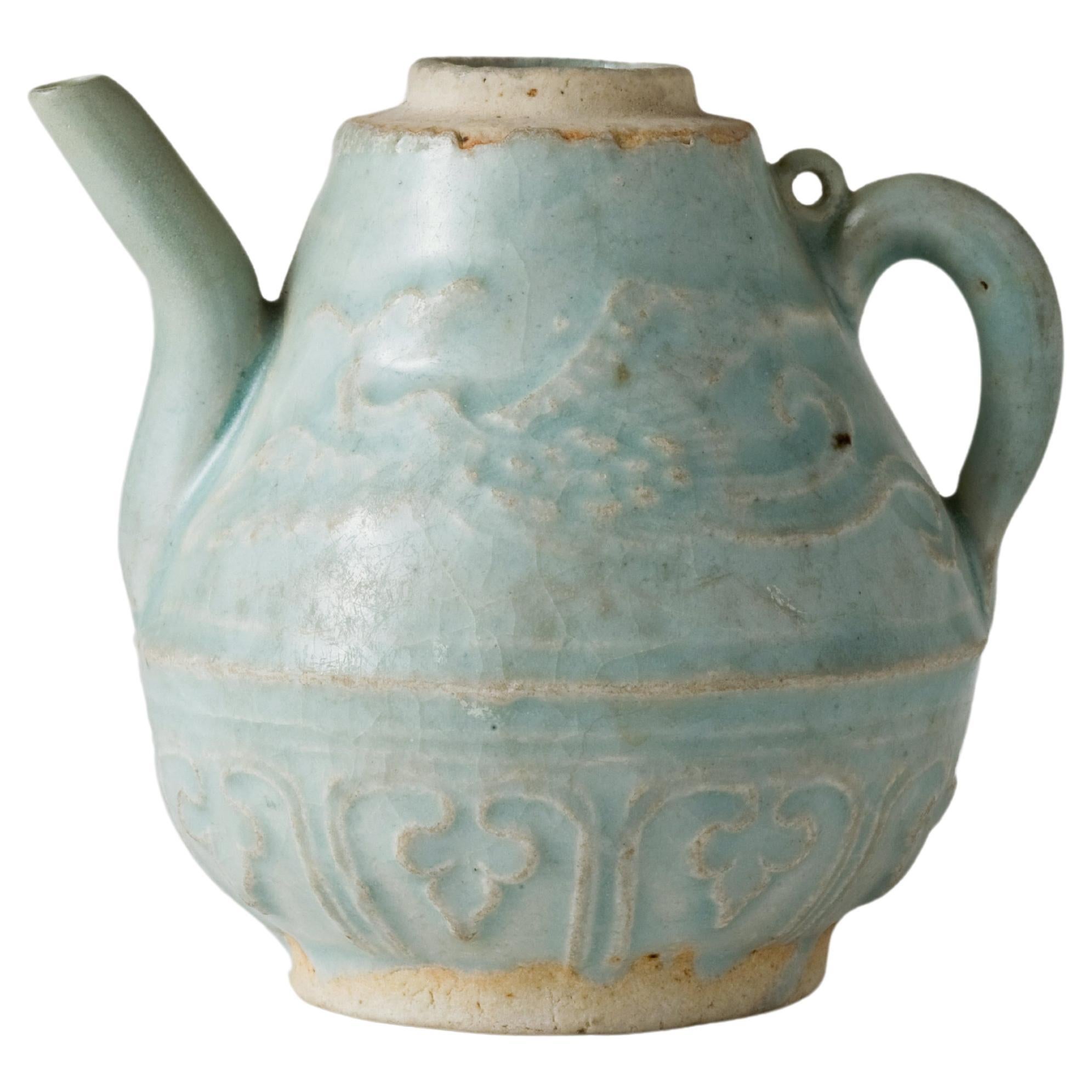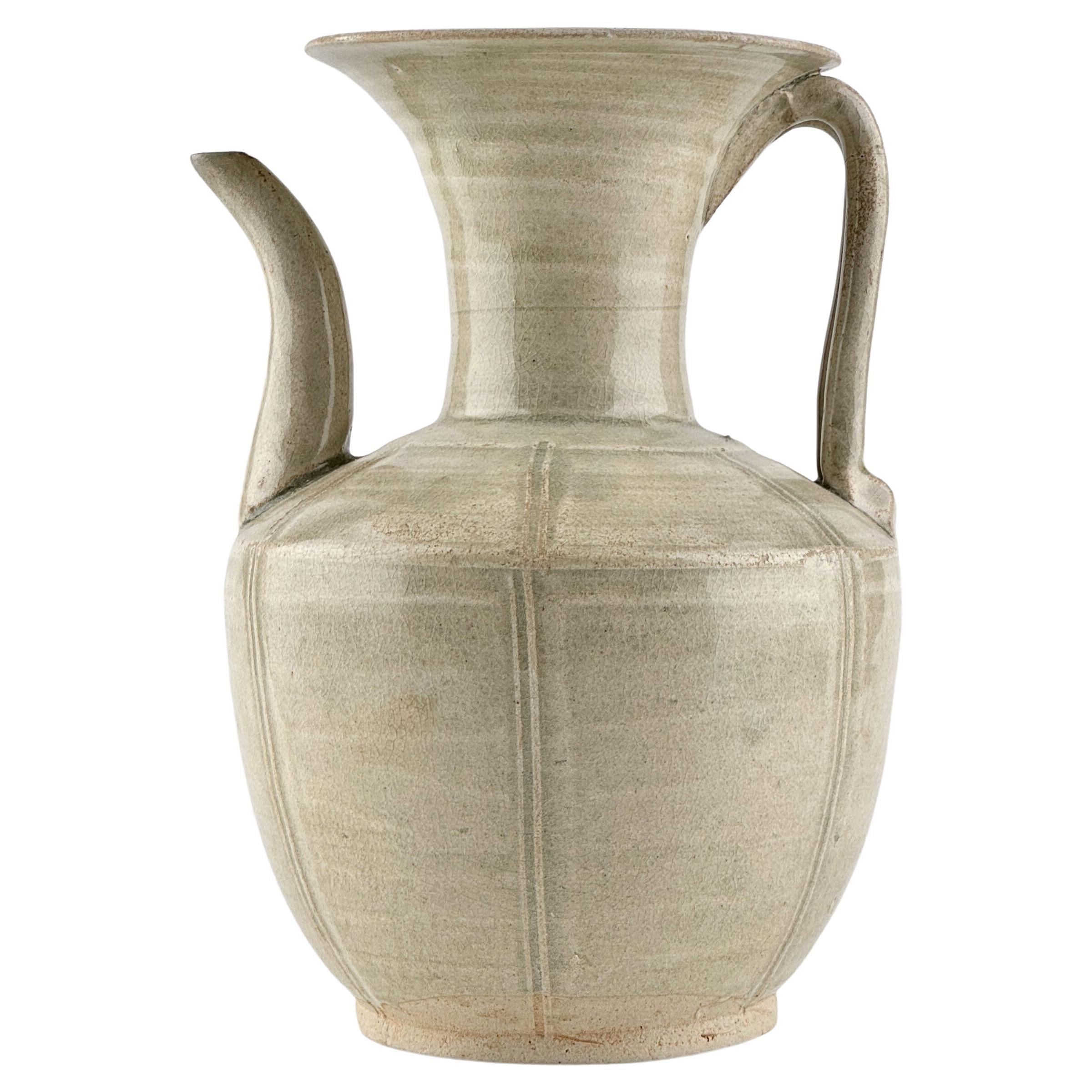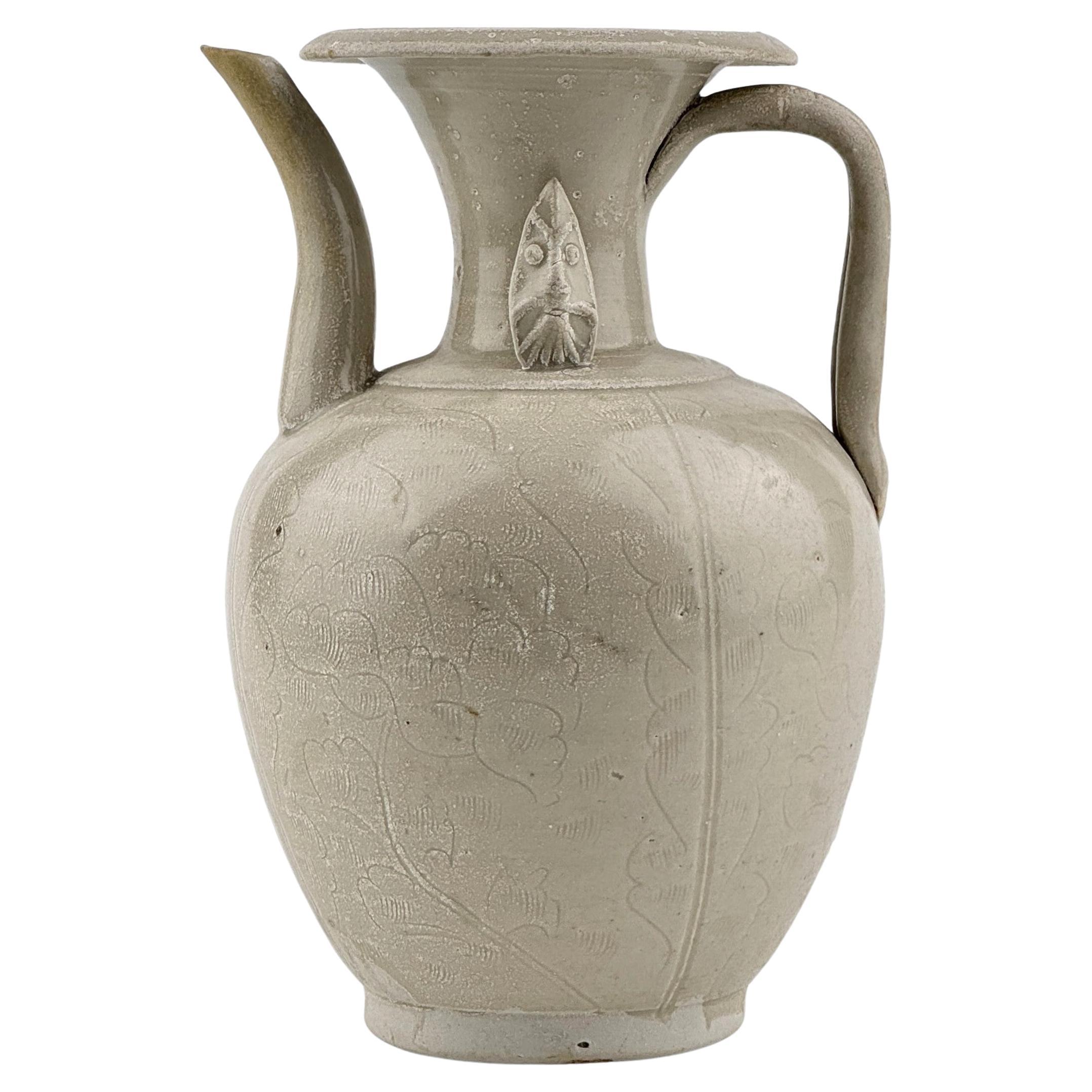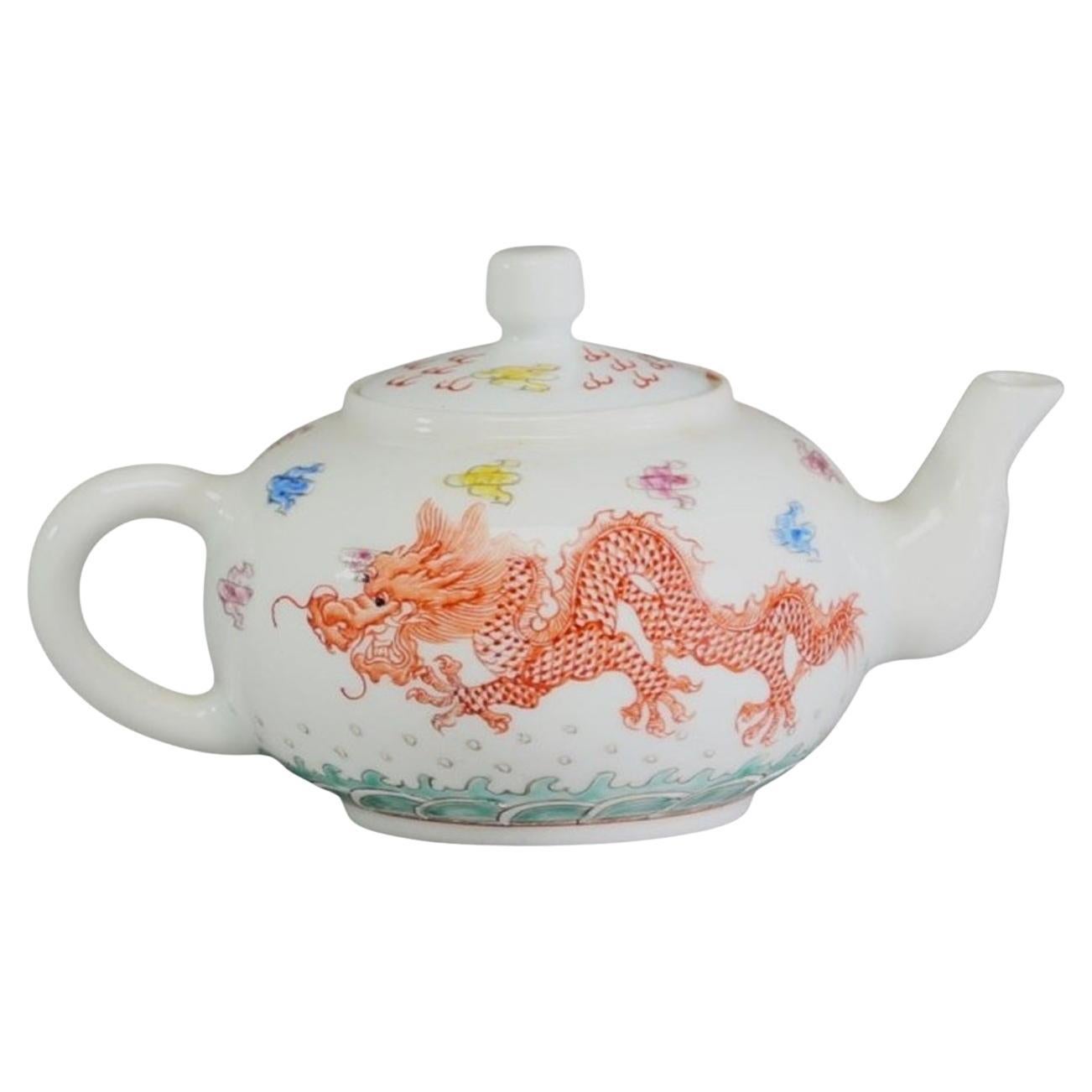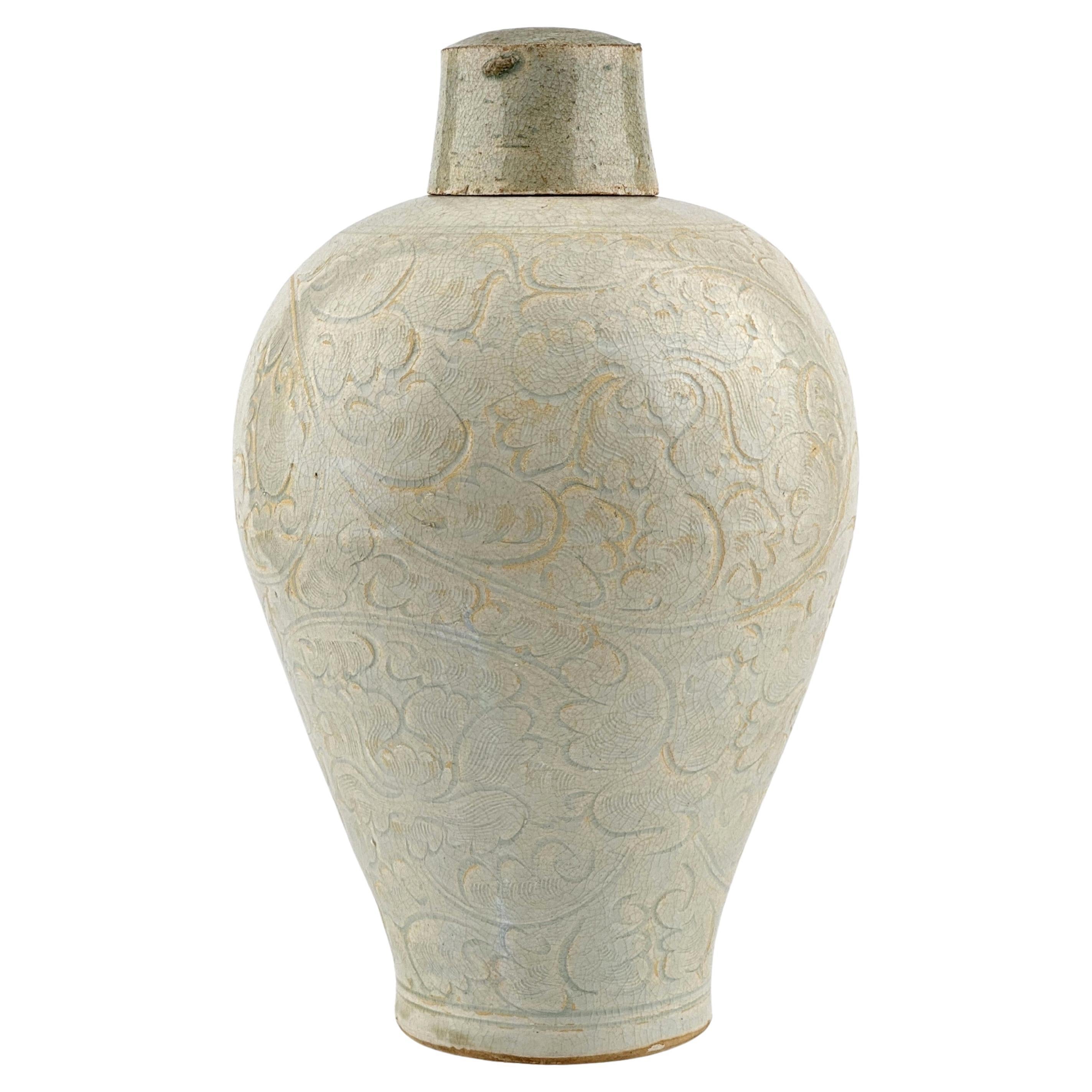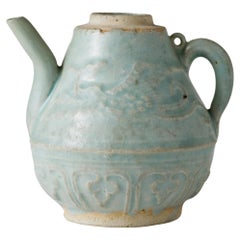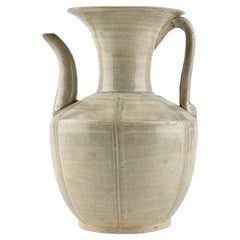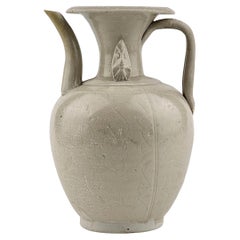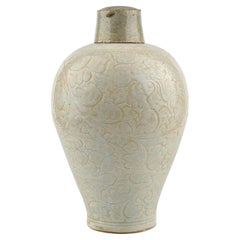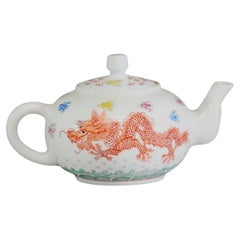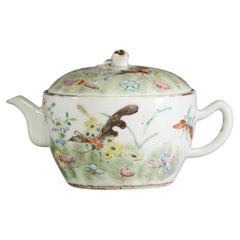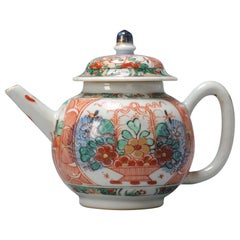Items Similar to Rare Qingbai Carved Ewer, Song-Yuan Dynasty
Want more images or videos?
Request additional images or videos from the seller
1 of 19
Rare Qingbai Carved Ewer, Song-Yuan Dynasty
$4,470
$14,90070% Off
£3,393.55
£11,311.8370% Off
€3,881.49
€12,938.3270% Off
CA$6,245.24
CA$20,817.4670% Off
A$6,946.07
A$23,153.5670% Off
CHF 3,627.02
CHF 12,090.0770% Off
MX$84,526.26
MX$281,754.2070% Off
NOK 46,322.59
NOK 154,408.6470% Off
SEK 43,442.42
SEK 144,808.0670% Off
DKK 28,969.08
DKK 96,563.6170% Off
Shipping
Retrieving quote...The 1stDibs Promise:
Authenticity Guarantee,
Money-Back Guarantee,
24-Hour Cancellation
About the Item
This Qingbai ewer features a rounded body with smooth curves, a short spout, and a looped handle, presenting a harmonious and balanced form. The lid is adorned with a flower-shaped finial, which complements the overall graceful design of the piece.
The surface of the ewer is intricately decorated with shallow, symmetrical floral carvings. These delicate patterns are subtly revealed beneath the translucent glaze, a hallmark of Qingbai ware. The carving technique creates a soft and harmonious visual effect, blending seamlessly with the overall form of the ewer. The smooth, pale blue-green glaze enhances the elegance of the piece, reflecting the high level of craftsmanship and refinement typical of the period.
The first three photos and the remaining ones were taken by different photographers and cameras, so the tone may appear different.
Period : Song-Yuan Dynasty(13-14th century)
Type : Ewer
Medium : Qingbai Ware
Provenance : Acquired in late 1990s from Hongkong
Reference :
1) Sotheby's New York 17 March 2015 - Song Tradition: Early Ceramics From The Yang De Tang Collection - Lot 100 - A RARE 'QINGBAI' CARVED EWER YUAN DYNASTY
(Price Estimate : 20,000 USD - 30,000 USD / Type : Closely related)
* Qingbai Ware
Qingbai ware, which translates to "blue-white ware," is a type of Chinese porcelain that was made at the Jingdezhen and other kilns in the porcelain-producing regions of China, primarily during the Song dynasty (960–1279) and continuing into the Yuan dynasty (1271–1368). It is known for its translucent quality and the pale blue-green glaze that characterizes most of its pieces.
The qingbai glaze was achieved using a small amount of iron in a reduction-fired atmosphere, which produced the subtle blue-green tint. The body of qingbai ware is typically made of a fine, white porcelain that is often referred to as 'artificial jade' due to its resemblance to the esteemed stone. The thinness of the body and the high firing temperatures used contributed to the translucent quality of the finished product.
Qingbai ware includes a range of items such as bowls, cups, vases, and ewers. The designs are usually simple and elegant, with an emphasis on the graceful lines and form of the objects. Decorative motifs, when present, are often incised, carved, or molded in relief and can include floral patterns, dragons, phoenixes, and other symbolic elements drawn from Chinese culture.
Over time, the technology and techniques used to produce qingbai ware evolved, leading to innovations in glaze and decoration that would influence later types of Chinese porcelain. Despite these changes, qingbai ware remains a distinguished example of the potters' art in Song and Yuan China, reflecting the refined aesthetic and cultural values of the period.
- Dimensions:Height: 2.76 in (7 cm)Diameter: 0.79 in (2 cm)
- Materials and Techniques:Ceramic,Glazed
- Place of Origin:
- Period:
- Date of Manufacture:13-14th century
- Condition:Minor fading. Discoloration along a straight line on the lower part of the body.
- Seller Location:seoul, KR
- Reference Number:1stDibs: LU9577241613172
About the Seller
4.8
Gold Seller
Premium sellers maintaining a 4.3+ rating and 24-hour response times
Established in 1999
1stDibs seller since 2023
38 sales on 1stDibs
Typical response time: <1 hour
- ShippingRetrieving quote...Shipping from: seoul, Korea South
- Return Policy
Authenticity Guarantee
In the unlikely event there’s an issue with an item’s authenticity, contact us within 1 year for a full refund. DetailsMoney-Back Guarantee
If your item is not as described, is damaged in transit, or does not arrive, contact us within 7 days for a full refund. Details24-Hour Cancellation
You have a 24-hour grace period in which to reconsider your purchase, with no questions asked.Vetted Professional Sellers
Our world-class sellers must adhere to strict standards for service and quality, maintaining the integrity of our listings.Price-Match Guarantee
If you find that a seller listed the same item for a lower price elsewhere, we’ll match it.Trusted Global Delivery
Our best-in-class carrier network provides specialized shipping options worldwide, including custom delivery.More From This Seller
View AllQingbai ewer with slip decoration of two phoenix and lotus leaves, Yuan Dynasty
Located in seoul, KR
This small ewer is an exquisite example of Qingbai ware, known for its pale blue-tinged glaze. The vessel showcases the advanced ceramic techniques and artistic sophistication of the...
Category
Antique 15th Century and Earlier Hong Kong Ming Antiquities
Materials
Ceramic, Porcelain
$2,950 Sale Price
50% Off
A Zhejiang Porcelain Ewer, Northern Song Dynasty
Located in seoul, KR
The oviform body is divided into few lobes. All covered in a finely crackled pale olive-green glaze. The surface and glaze characteristics are definitive, confirming the authenticity...
Category
Antique 15th Century and Earlier Hong Kong Antiquities
Materials
Porcelain
$2,925 Sale Price
35% Off
Qingbai Melon form water ewer, Five Dynasties-Northern song dynasty
Located in seoul, KR
The oviform body is divided into few lobes, and the shoulder is applied with a pair of small loops molded.
Period : Five Dynasties-Song Dynasty(907~1279)
Type : Ewer
Medium : Zheji...
Category
Antique 15th Century and Earlier Hong Kong Antiquities
Materials
Porcelain
$1,495 Sale Price
50% Off
A Qingbai Carved Meiping Porcelain, Song Dynasty
Located in seoul, KR
The vase exhibits a finely crafted structure, characterized by its wide shoulders and elongated, tapering sides, topped with a compact, ribbed cylindrical neck. Its exterior is adorn...
Category
Antique 15th Century and Earlier Hong Kong Ceramics
Materials
Ceramic, Porcelain
$6,965 Sale Price
65% Off
Yue Celadon Ewer, Late Tang-Northern Song Dynasty
Located in seoul, KR
This Yue ware celadon ewer features a gracefully rounded body that expands smoothly, complemented by a wide, flaring mouth. The translucent olive-green glaze envelops the surface, en...
Category
Antique 15th Century and Earlier Hong Kong Tang Antiquities
Materials
Celadon
$3,150 Sale Price
30% Off
Changsha ewer, Tang Dynasty(618-907)
Located in seoul, KR
Changsha Ware has distinct and recognizable designs and motifs. Painted designs often depict flowers, vines, clouds and mountain landscapes. Some painting is simply splotches of colo...
Category
Antique 15th Century and Earlier Hong Kong Tang Antiquities
Materials
Stoneware
$3,196 Sale Price
60% Off
You May Also Like
Chinese Guanxu Porcelain Teapot Marked And from the period (1875-1908)
Located in Bilzen, BE
Antique Chinese porcelain teapot with fine hand-painted decoration, 6-character mark of Guangxu from the period (1875-1908)
Perfect condition, no chips, cracks or other defects
Tota...
Category
Antique Late 19th Century Chinese Qing Ceramics
Materials
Porcelain
Yixing Teapot, Qing, c.1900
Located in Savannah, GA
A Yixing teapot, Qing Dynasty, circa 1900.
6 ¾ inches wide by 4 ¼ inches deep by 3 ¾ inches tall
Category
Antique Early 1900s Chinese Qing Tea Sets
Materials
Ceramic
Chinese Tongzhi Porcelain Teapot Marked And from the period (1861-1875)
Located in Bilzen, BE
Antique Chinese porcelain teapot with fine hand-painted decoration, marked with a seal period mark of Tongzhi (1861-1875)
Perfect condition, no chips, cracks or other defects
Total ...
Category
Antique Late 19th Century Chinese Qing Ceramics
Materials
Porcelain
Antique Chinese Teapot Kangxi/Yongzheng Imari Amsterdam Bont Qing
Located in Amsterdam, Noord Holland
A very nicely decorated Kangxi or Yongzheng Teapot. Rare teapot in the family of Amsterdam Bont. Dating to 1st half of the 18th century
Amsterdams Bont
A relatively unknown niche of Chinese porcelain from ca 1680-1740 that was partly decorated in Europe. Because mainstream Chinese collectors have yet to discover the historical significance of these wares they are relatively easy to find in Holland. While also being highly interesting and of often super quality and with an amazing array of decorations. Amsterdams Bont is a name given to porcelain partly decorated in the Netherlands (most likely in cities like Delft, Haarlem, Makkum). Because Amsterdam was at this moment in time the trade centre of the western world and also of the porcelain trade a lot of this over enamelling was probably commissioned by Amsterdam merchants, to reap higher profits on otherwise boring Chinese wares. The name Amsterdam Bont probably derives from the fact that these type of decorated ware was sold by Amsterdam Merchants. Amsterdam Bont consists of either blanc or under glaze blue decorated Chinese porcelain...
Category
Antique 18th Century Chinese Tea Sets
Materials
Porcelain
$1,518 Sale Price
20% Off
Chinese ceramic teapot, Qing Dynasty, 19th century
Located in Autonomous City Buenos Aires, CABA
Chinese ceramic teapot, Qing Dynasty, 19th century
Old Chinese teapot with a striking design of two dragons facing each other, in cold colors an...
Category
Antique 19th Century Chinese Qing Ceramics
Materials
Ceramic
Antique Chinese Porcelain Kangxi Imari Landscape Teapot, 18th Century
Located in Amsterdam, Noord Holland
A very nicely decorated teapot in imari palette. Kangxi period with landscape
Additional information:
Material: Porcelain & Pottery
Region of Origin: China
Period: 18th century
Emp...
Category
Antique 18th Century Chinese Qing Tea Sets
Materials
Porcelain
$135 Sale Price
20% Off
More Ways To Browse
Rare Asian Art
Ewers
Antique Ewer
Song Dynasty
Chinese Song Dynasty
Song Dynasty Furniture
Antique Iron Glaze
Carved Stone Relief
Song Porcelain
Song Dynasty Ceramics
Chinese Ceramics Song Dynasty
Rare Antique Asian Vases
Ceramic Loops
Song Dynasty Vase
Song Dynasty Porcelain
14th Century China
Chinese 14th Century
Chinese Dragon And Phoenix
